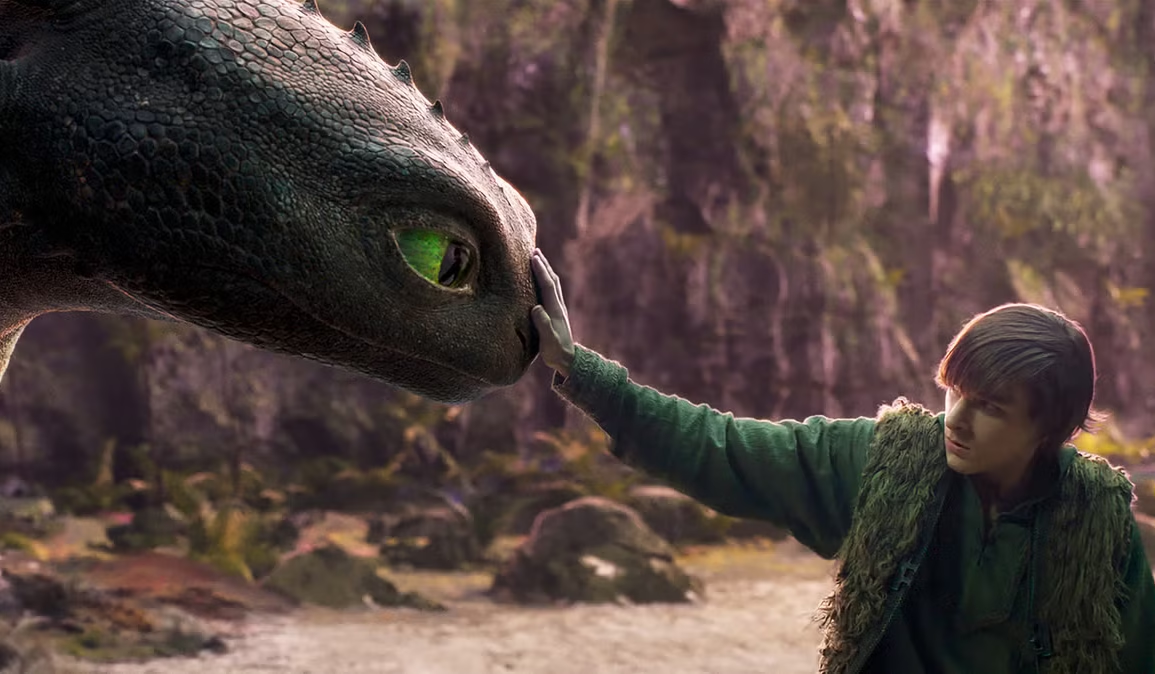As two of the top movies at the box office continue the trend of modernizing beloved animated classics in live action form, the remake of How To Train Your Dragon featured some reasons for apprehension. The box office returns on the live action remakes have been mixed, DreamWorks hadn’t yet developed a track record for how their live action re-imaginings look, and the How To Train Your Dragon trilogy is rather young at only fifteen years of age with the third instalment coming right before the pandemic, perhaps not giving audiences enough time to breathe or develop nostalgia for the series.
None of it mattered, however, as the dragon set fire to the box office gathering an approximated $198M Opening Weekend worldwide, including $83M domestic. Perhaps the love of the franchise for what’s still a generally young audience carried the brunt of the box office, however, this is still well more than double the opening weekends of any of the three animated How To Train Your Dragon films. The fact that there’s an inherently broader appeal for a movie that isn’t animated despite the unprecedented growth in both production techniques and viability within the cultural lexicon for the genre in recent years likely had a lot to do with its box office returns, but the movie delivers, leading to quite a strong word of mouth.
The live action film, which currently has audiences raving through audiences scores on different platforms, is on par with that of the original movie that it is based upon. The Letterboxd rating, for example, currently sits at a 4.0 compared to the 4.1 of the original, its ‘A’ CinemaScore matches its animated counterpart, and 98% popcorn meter is an improvement from 2010’s offering by seven percent. While a beloved franchise like Lilo and Stitch dominates because of its IP despite shying away from its original feel, How to Train Your Dragon figured out how to maintain its earnest appeal from a qualitative standpoint: the feel of the world.
The movie itself looks different. A lot of its general presentation may be the same, but the extravagant CGI-live action sets are very different than that of the animated feature because it’s simply a different medium where you’re forced to do different things. However, the world still felt true to its source material as the innate sensibility of what the island that the Vikings and Dragons live on is and how it is supposed to be portrayed. It understood the character dynamics, what made each tick, and why the motivations from anybody involved were never evil, even if they were harsh on the surface level.
The meticulous world building is where the largest flaw in the movie reveals itself. The first half hour feels as though it potentially could have been trimmed down, and might overstay its welcome for some members of the audience. However, the time was used economically as it fleshed out each character within the supporting cast that ended up tying together delivering the crux of the emotion in the climax of the picture. Dean DeBlois, who ironically became famous for directing the original version of Lilo and Stitch at the turn of the century, directing his first feature-length live action picture, continuing an excellent output for a series in which he has now directed all four installments of. When you hire the artistic mind behind a franchise to reboot the franchise, those people are the most likely to deliver an experience tonally coherent when compared to its original, something that most studios have missed the mark of while trying to expand returns from tentpole films. There are many ways to tell stories, but the context found within the subtext of the fantasy is what makes or break the story that is begging to be told. DeBlois wasn’t the only returning crew member, either, as Gerard Butler returned to reprise his role as Stoick. In doing so, Butler’s physically demanding performance delivered perhaps his finest since his breakout role in Phantom of the Opera in the early aughts. With an inexperienced group of actors, veterans such as Butler and Nick Frost (Shaun of the Dead) to anchor the film maintain the balance from potentially uneven spots.
Maybe the most surprising thing about the 2025 How To Train Your Dragon is its holiday release date. But of its many sub-themes, its views on father-son dynamics make it a worthy Father’s Day weekend retreat for families. Its other themes include looks at grief, war, dynamics between different living creatures, and provides subtle ways to tackle all of the mature themes that it offers on top of its excellent CGI in a whimsical world.
Ultimately, How To Train Your Dragon understood what made the first film special, and a strive to tell a story in as close to the same world as possible is its biggest strength. How To Train Your Dragon is an absolute win, and people interested should go see it in its premium offerings such as Dolby Cinema or IMAX before those engagements end.
Follow me on Twitter here.
Follow me on BlueSky here.
Follow me on Letterboxd here.
